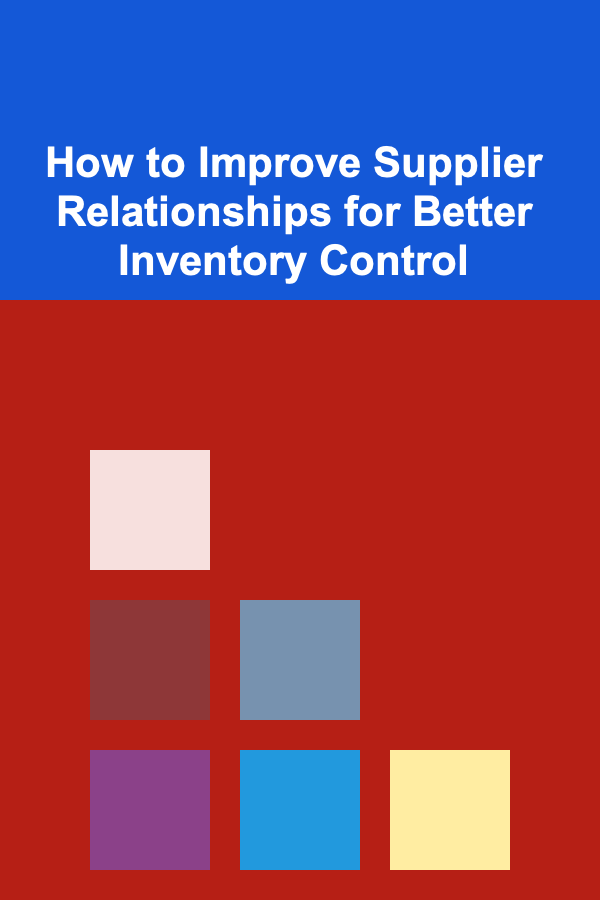
How to Create a Checklist for Securing Auction or Raffle Items for Your Fundraiser
ebook include PDF & Audio bundle (Micro Guide)
$12.99$11.99
Limited Time Offer! Order within the next:

Fundraisers are essential events for raising money for causes, but the success of a fundraiser often hinges on the quality and appeal of the auction or raffle items. Securing the right items can boost attendance, create excitement, and increase bidding activity, ultimately driving more funds for your cause. A well-organized checklist is a critical tool that ensures you don't miss any essential steps in the process.
In this actionable guide, we will walk you through how to create a comprehensive checklist for securing auction or raffle items for your fundraiser. Whether you're a first-time fundraiser organizer or an experienced event planner, this guide will provide you with the insights needed to gather high-value items and set your fundraiser up for success.
Define Your Fundraiser's Goals and Target Audience
Before diving into the process of securing auction or raffle items, it's crucial to define your fundraiser's goals and target audience. The type of items you seek should be aligned with the preferences of your audience and the overall objectives of the fundraiser. This will ensure that you get the right kind of donations that will excite your attendees and motivate them to participate.
Actionable Steps:
- Clarify Fundraising Goals: What is the purpose of the fundraiser? Are you raising money for a local charity, a school, a community project, or a specific individual in need? Understanding your goals will help determine the kind of items that best align with your cause.
- Identify Your Audience: Are your attendees likely to be individuals with a taste for luxury items, sports fans, or art enthusiasts? Knowing the demographics of your audience will help you identify the most appealing items.
- Budget Constraints: What is your budget for procuring items for auction or raffle? Are you aiming to secure high-end items, or is the focus on attracting a broad range of participants with more affordable prizes?
By understanding your audience and goals, you can better target your efforts and tailor your outreach for maximum impact.
Determine the Type of Items You Need
Different fundraisers call for different types of items. Some fundraisers may work well with experience-based prizes, while others may attract more attention with physical goods. A combination of both can create an engaging and diverse auction or raffle pool.
Actionable Steps:
-
Item Categories: Think about the type of auction or raffle prizes that could appeal to your audience. Consider items like:
- Experiential Prizes: Concert tickets, weekend getaways, behind-the-scenes tours, cooking classes, or VIP access to events.
- Physical Items: Electronics, luxury goods, artwork, jewelry, vacation packages, and sports memorabilia.
- Local Business Contributions: Gift cards to local restaurants, retail stores, or services.
- Unique or Personalized Items: Customized jewelry, personalized artwork, or bespoke experiences tailored to the winner.
-
Prize Tiers: To encourage participation from a broad audience, consider offering a mix of high-end items and more affordable prizes. Raffle items can be smaller in value, while auction items can be higher-ticket, collectible, or exclusive experiences.
Identify Potential Donors and Sponsors
Securing auction or raffle items relies on reaching out to the right donors and sponsors. These can include businesses, local influencers, celebrities, or individuals who are aligned with your cause. Many organizations are willing to donate in exchange for exposure or goodwill, but it's important to approach them strategically.
Actionable Steps:
- Leverage Existing Relationships: Start by identifying individuals or businesses that have an existing relationship with your organization or cause. These contacts are often the most willing to contribute.
- Target Local Businesses: Local shops, restaurants, and service providers are often eager to promote their businesses by donating goods or services to a worthy cause. When approaching them, focus on the exposure they'll get from your event and the potential benefits of supporting the community.
- Approach Corporations: Larger companies or corporations may also be a great source of donations, especially if they have a charitable giving program. Be sure to target companies whose values align with your cause.
- Reach Out to Celebrities or Influencers: If your fundraiser is for a high-profile cause, you may want to reach out to celebrities or social media influencers who could donate exclusive items or experiences. Their involvement can also help raise awareness for your event.
A thoughtful approach to potential donors can help you secure valuable auction or raffle items while fostering lasting relationships for future events.
Create a Solicitation Letter or Email Template
When reaching out to potential donors, a well-crafted solicitation letter or email is crucial. Your message should clearly explain the purpose of your fundraiser, the specific items you are seeking, and the benefits of donating. The letter should be both professional and compelling, making it easy for donors to understand the value of their contribution.
Actionable Steps:
- Personalize Your Message: Whenever possible, tailor your letter or email to the recipient. A personalized message is far more likely to get a positive response than a generic one.
- Outline the Benefits: Be sure to explain how their donation will be recognized at the event, on social media, or in promotional materials. Highlight the potential exposure their brand could receive.
- Be Clear About What You Need: Specify the types of items you are looking for and how the donation process works. Provide details on how donors can submit their contributions and any deadlines.
Example Solicitation Email:
Subject: Request for Donation for [Fundraiser Name]
Dear [Donor's Name],
I hope this message finds you well. My name is [Your Name], and I am reaching out on behalf of [Your Organization]. We are hosting a fundraiser on [Date], and we are seeking donations for our auction and raffle to raise funds for [Cause].
We would be honored to feature your [product/service] as one of our prizes. In return, we would be delighted to recognize your contribution during the event, on our website, and across our social media platforms.
Please let me know if you would be interested in supporting this event, and I can provide more details on how to participate. Thank you for considering our request.
Warm regards,
[Your Name]
[Your Contact Information]
Track and Organize Donations
As you secure donations, it's vital to stay organized. Tracking your donations will ensure that you don't miss any contributions, and it will help you keep your donors informed of the items they've provided.
Actionable Steps:
- Create a Donation Tracker: Use a spreadsheet or a donation management tool to track each item donated, including the donor's name, contact information, the item description, and its estimated value. This will allow you to easily reference the details when promoting the items or preparing your event materials.
- Acknowledge and Thank Donors: Acknowledge every donation promptly and send a thank-you note or email. Consider featuring your donors in event promotional materials or on social media to show your appreciation and encourage future contributions.
- Log Deadlines: Keep track of when items are due and follow up with donors who haven't yet contributed. This helps ensure that all items are secured on time for your fundraiser.
Promote Your Auction or Raffle Items
Once you've secured the items, it's time to create excitement around them. Proper promotion can increase engagement and encourage higher bids or greater raffle ticket purchases. You'll want to use every channel available to showcase the items and build anticipation leading up to the event.
Actionable Steps:
- Create Visuals for Social Media: Take high-quality photos or create graphics showcasing the auction or raffle items. Share these visuals on your social media channels, your website, and through email newsletters to build buzz.
- Highlight Exclusive or High-Value Items: Feature your most exciting or valuable auction items prominently in your promotions to drive interest. A VIP experience or a one-of-a-kind item can generate significant attention.
- Email Campaigns: Send targeted email blasts to your potential attendees with highlights of the available items, emphasizing the value and exclusivity of certain prizes.
Follow Up After the Event
After the fundraiser is over, it's important to follow up with both your donors and attendees. Express your gratitude, share the outcome of the event, and consider offering future opportunities for them to get involved.
Actionable Steps:
- Send Thank-You Notes: Personally thank each donor for their contribution and let them know how their donation helped make the fundraiser a success.
- Provide Event Recap: Share the results of the fundraiser and highlight how much was raised. If applicable, send out tax receipts for donations.
- Ask for Feedback: Reach out to attendees and donors for feedback on the auction or raffle experience to improve future events.
Conclusion
Creating a checklist for securing auction or raffle items is an essential part of planning a successful fundraiser. By defining your goals, understanding your audience, identifying the right donors, and staying organized, you can curate an exciting selection of prizes that will drive participation and increase your fundraising success.
Approaching the process with clear steps, personalization, and strategic outreach will ensure you secure the best possible items for your event while building lasting relationships with your donors and sponsors. A well-executed auction or raffle can become a central pillar of your fundraiser, helping you achieve your fundraising goals and furthering your cause in meaningful ways.

How To Choose the Right Coach for Extreme Sports
Read More
How to Improve Supplier Relationships for Better Inventory Control
Read More
How to Organize Appliance Cords and Cables
Read More
How to Use Yoga for Improved Mood
Read More
Smart Strategies for Cutting Down on Personal Care Services Without Sacrificing Quality
Read More
10 Tips for Scaling Your Consulting Business
Read MoreOther Products

How To Choose the Right Coach for Extreme Sports
Read More
How to Improve Supplier Relationships for Better Inventory Control
Read More
How to Organize Appliance Cords and Cables
Read More
How to Use Yoga for Improved Mood
Read More
Smart Strategies for Cutting Down on Personal Care Services Without Sacrificing Quality
Read More